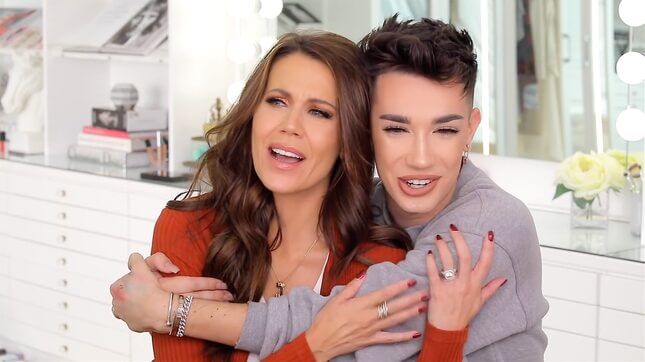James Charles and Tati Westbrook Are Rewriting Reality TV For YouTube
Latest

Over this weekend, James Charles’s beauty empire began to crumble. Fresh off the heels of an appearance at the Met Ball— a moment the beauty guru and YouTuber referred to as important step for “influencer representation” — Charles found himself in a roiling cauldron of drama, that, at first blush felt sort of authentic, but upon closer examination, is likely another plot point in the narrative he has been crafting for himself as a cast member of the culture’s greatest reality television experiment yet—YouTube. As YouTube has aged, the platform has begun to quietly reengineer the mess and the strife that reality television in 2019 lacks, and emerge as the clear successor to the genre, with Charles and co. as its willing guinea pigs.
For the uninitiated who have blessedly kept all news of James Charles and his mentor-turned-enemy Tati Westbrook out of their lives, the gist is as follows: Westbrook, a grand doyenne of the Beauty YouTube community, took Charles under her wing when he was just a fledgling beauty blogger with a penchant for highlighter and guided him through the wild and wooly world of brand sponsorships, contracts, and sudden fame. All Westbrook wanted from Charles was his fealty—to her as a mother figure, and also to her gummy vitamin brand, Halo Beauty. Charles violated that social contract by engaging with a rival gummy vitamin brand, SugarBear Hair in an incident that was apparently due to security concerns at Coachella. Both influencers have released apology videos; Westbrook’s star is on the rise, and Charles’s is rapidly declining.
All Westbrook wanted from Charles was his fealty—to her as a mother figure, and also to her gummy vitamin brand, Halo Beauty.
At face value, the controversy is about loyalty, the most valuable currency in the beauty community. Alliances formed behind the scenes—both with brands and other YouTubers—theoretically foster “community,” but function mostly as a means of savvy self-promotion. Fealty and betrayal are two of the oldest plot devices, used to great effect on the platform. Much like early reality TV experiments like The Real World, where drama was created by dint of circumstance—seven strangers living in a house—the construction of YouTube is fertile ground for petty disputes writ large. The end game, of course, isn’t ratings or even creating an authentic record of what it’s like to be alive—it’s subscribers, clout, and influence.
The allure of YouTube lies in its accessibility and its ability, as a platform, to provide a Warholian 15 minutes for anyone who wants it. Anyone with a camera and an internet connection can start a channel, like Charles did, but growing it from side hustle to full-time job requires business acumen, video editing skills, and above all, charisma that charms viewers into thinking they’re both friend and fan. According to Westbrook, she is the architect of Charles’s success. Without her, he would be nothing. The moral high ground, to hear her tell it, belongs to her.
-

-

-

-

-

-

-

-

-

-

-

-

-

-

-

-

-

-

-

-

-

-

-

-

-

-

-

-

-

-

-

-

-

-

-

-

-

-

-

-








































